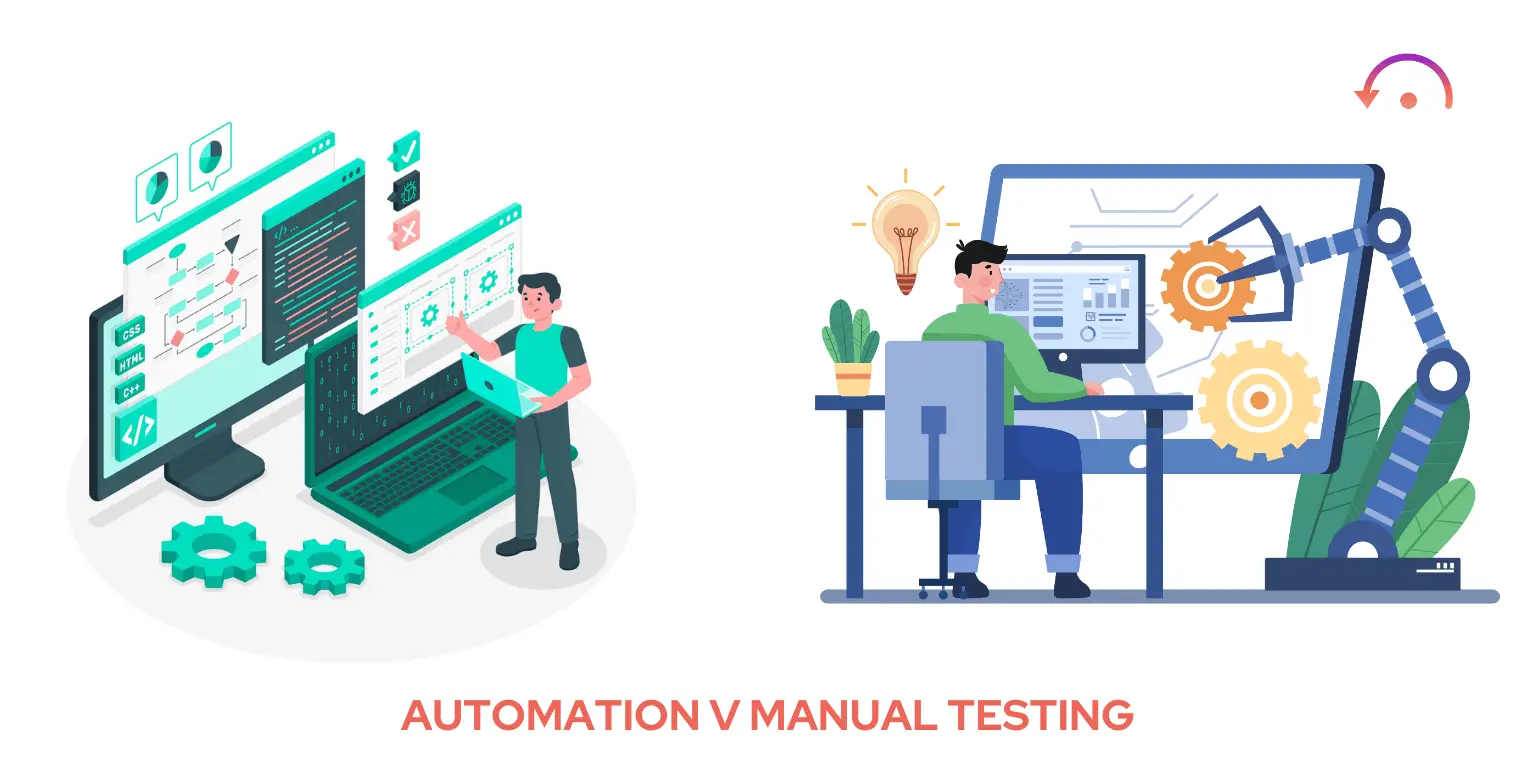Test automation has become a cornerstone of modern software development, promising increased efficiency, faster release cycles, and improved quality. However, the field is often shrouded in misconceptions that can lead to unrealistic expectations and ultimately, failed automation initiatives. This article aims to debunk common myths surrounding test automation, offering a more practical and nuanced understanding.
Myth 1: Everything Can Be Automated (Achieving 100% Automation)
The idea of automating every single test case is a pervasive myth. While automation can cover a significant portion of testing efforts, achieving 100% automation is rarely feasible or even desirable. Certain types of testing, such as exploratory testing, usability testing, and some aspects of performance testing, require human judgment, intuition, and interaction. These areas benefit more from manual testing approaches.
Automating every aspect of testing often appears appealing due to its promise of efficiency. However, the reality is that not all tests provide equal value when automated. High-maintenance tests or those requiring nuanced human interpretation may end up consuming more resources than they save. A balanced approach ensures that automation supports the team rather than becoming a bottleneck.
Why Full Automation is a Myth?
-
Dynamic Elements: Modern applications often have dynamic elements that are difficult to automate reliably.
-
Human Creativity: Exploratory testing and usability testing rely heavily on human insight, intuition, and adaptability.
-
Cost-Effectiveness: Automating rarely executed or complex edge cases is often not worth the cost.
The Ideal Scenario:
Automation works best when applied to:
-
Repetitive Tests: Scenarios like regression tests and smoke tests.
-
Data-Driven Tests: Tests requiring multiple input combinations.
-
Critical Functionality: Automation ensures vital functions are consistently validated.
Myth 2: Quick ROI Every Time
The notion that automation delivers instant ROI is misleading. The initial investment in setting up automation frameworks, creating test scripts, and maintaining them requires time and resources.
ROI expectations often drive automation initiatives, but these expectations must be tempered with an understanding of the setup and ramp-up phases. Organizations should view test automation as a long-term investment rather than a quick fix for budget constraints.
Why Quick ROI is a Myth?
-
Initial Setup Costs: Building a robust framework takes time.
-
Learning Curve: Teams may need training to use tools effectively.
-
Maintenance Overhead: Test scripts need to evolve with the application.
The Ideal Scenario:
-
Strategic Test Selection: Automate high-impact tests for immediate value.
-
Incremental Automation: Start with a small set of tests and scale up.
-
Long-Term Focus: Emphasize ROI over multiple development cycles.
Get your Free test Clouser Report and start building better software today!
Myth 3: Automated Testing is Better Than Manual Testing
Automated and manual testing are not adversaries but allies. Each approach serves different purposes and strengths.
The belief in automation as inherently superior often overlooks the unique strengths of manual testing. Automation provides speed and consistency, while manual testing excels in scenarios requiring adaptability and human insight. Recognizing the complementary nature of both approaches is key.
Why this is a Myth?
-
Exploration and Creativity: Manual testing allows for human-driven exploration of new bugs.
-
Interface Sensitivity: Visual design and usability testing need human feedback.
The Ideal Scenario:
-
Use automation for repetitive and regression testing.
-
Employ manual testing for areas requiring creativity and adaptability, like exploratory or usability testing.
Myth 4: Developers Should Lead Automated Testing Efforts
While developers contribute to unit testing, broader test automation efforts benefit from dedicated QA professionals.
The assumption that developers should lead test automation often stems from their technical expertise. However, successful automation requires not just coding skills but also deep knowledge of testing strategies, which is where QA professionals shine.
Why developers being better at automated testing is a Myth?
-
Focus Area: Developers prioritize coding features, not designing test frameworks.
-
Skill Sets: QA engineers are skilled in testing strategies, frameworks, and methodologies.
The Ideal Scenario:
-
Foster collaboration between developers and QA engineers.
-
Leverage the expertise of dedicated automation engineers for scalable solutions.

Myth 5: Automation Will Solve All Your Problems
Test automation is a tool, not a panacea. Without a strategy, it cannot fix flawed processes or poor-quality code.
Organizations sometimes view automation as a silver bullet, expecting it to resolve deep-seated issues. While it can enhance efficiency and coverage, automation must be part of a broader strategy that addresses development and testing practices.
Why this is a Myth?
-
Scope Limitations: Automation works within defined boundaries and cannot replace comprehensive strategies.
-
Underlying Issues: Code quality, unclear requirements, and lack of collaboration need different solutions.
The Ideal Scenario:
-
Combine automation with robust development and testing practices.
-
Use automation to supplement, not replace, other QA activities.
Myth 6: Anyone Can Automate
Automation requires specialized skills, including scripting, framework development, and tool proficiency.
The myth that anyone can automate often stems from oversimplified tool demonstrations. Effective automation demands a deeper understanding of software architecture, testing methodologies, and tool-specific nuances.
Why this is a Myth?
-
Technical Expertise: Tools like Selenium or Leapwork require advanced skills.
-
Design Complexity: Designing reusable and robust scripts is a skill.
The Ideal Scenario:
-
Train dedicated test automation engineers.
-
Use tools that match the team’s skill set and needs.
Myth 7: Automation Finds More Bugs
Automation ensures consistency but does not inherently find more bugs than manual testing.
The misconception that automation finds more bugs often arises from its ability to execute tests faster. However, the quality of bugs discovered depends on the scope and design of the tests, not the testing method.
Why this is a Myth?
-
Coverage Limitations: Automation only finds bugs in the areas it tests.
-
Exploratory Gaps: Manual testers find novel bugs through exploration.
The Ideal Scenario:
-
Use automation for frequent regression tests to catch repetitive issues.
-
Employ manual testing for new feature validations and exploratory testing.
Myth 8: Once Automated, Cost Savings is a Given
Cost savings come with time and effort, not instantly after implementation.
Cost-saving promises of automation often omit the ongoing effort required for script maintenance and tool updates. Realizing these savings depends on strategic planning and sustained investment.
Why this is a Myth?
-
Maintenance Overhead: Updating scripts for application changes is ongoing.
-
Framework Evolution: Frameworks require updates to remain effective.
The Ideal Scenario:
-
Design maintainable scripts to minimize updates.
-
Allocate a budget for continuous improvements and training.
"Adopting Shift Left is more than a process change—it's a mindset shift that turns every challenge into an opportunity to build quality from the ground up. Embrace collaboration, bridge skill gaps, and choose the right tools to turn resistance into resilience."
Rishi Gaurav, Vice President
Myth 9: Test Automation Will Replace Manual Testers for Good
Automation complements manual testing, it does not replace it.
The fear that automation will replace manual testers ignores their irreplaceable contributions to areas like exploratory testing, usability, and creative problem-solving. Automation frees testers to focus on these higher-value activities.
Why this is a Myth?
-
Unique Skills: Manual testers excel in exploratory testing and critical thinking.
-
Automation Gaps: Areas like usability testing cannot be automated effectively.
The Ideal Scenario:
- Free up manual testers for strategic tasks.
- Combine automation for efficiency with manual efforts for innovation and adaptability.
Myth 10: All Automated Tests Should Always Pass
Automation tests are meant to show the current state of the build or application, and it is natural for some tests to fail due to various reasons, including false positives or false negatives.
Expecting all automated tests to always pass creates unrealistic expectations. Test automation serves as a diagnostic tool, highlighting areas that need attention. It is more important to focus on achieving accurate results—whether the tests pass or fail—rather than striving for an all-pass outcome.
Why this is a Myth?
- False Positives/Negatives: Automation scripts can sometimes have bugs, leading to misleading results.
- Dynamic Factors: Network issues, environment instability, or application changes can cause test failures.
The Ideal Scenario:
- Focus on accurate test results, not perfect pass rates.
- Follow development best practices for test scripts: Analyze → Develop → Test → Release.
- When tests fail, take appropriate actions:
- Check if it’s a known issue and tag it as “Ignore” to save time.
- Investigate logs to identify the cause—log bugs for application issues.
- Rerun tests to confirm intermittent issues and escalate to DevOps if necessary.
- Fix script issues and validate them thoroughly before the next run.
Conclusion
Test automation is a powerful tool when used strategically and realistically. By understanding and debunking these common myths, organizations can make informed decisions about their automation strategies, avoid common pitfalls, and reap the true benefits of this valuable practice. It’s about finding the right balance between manual and automated testing to achieve optimal software quality.






